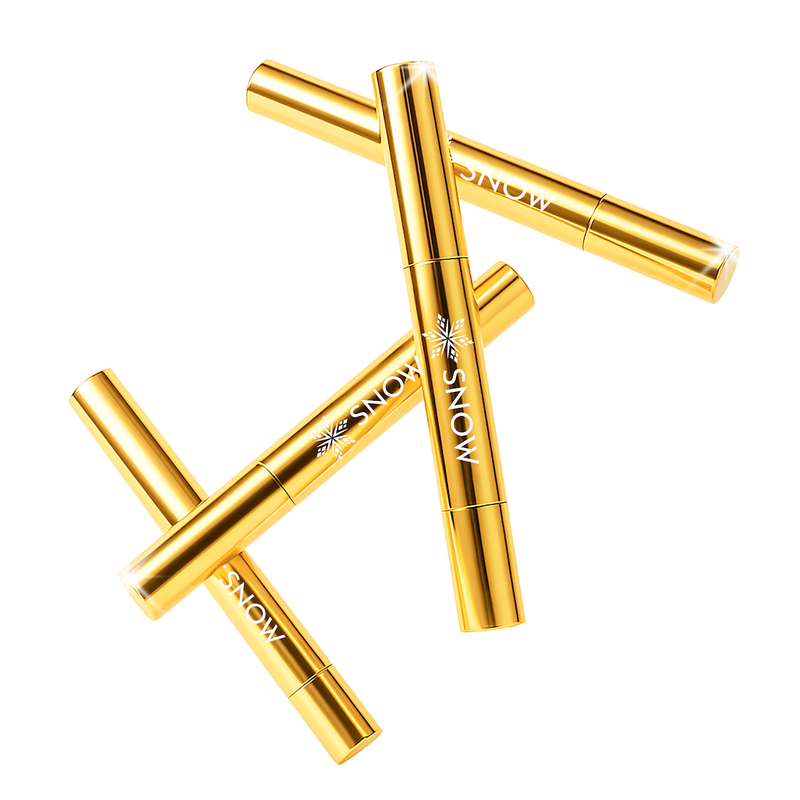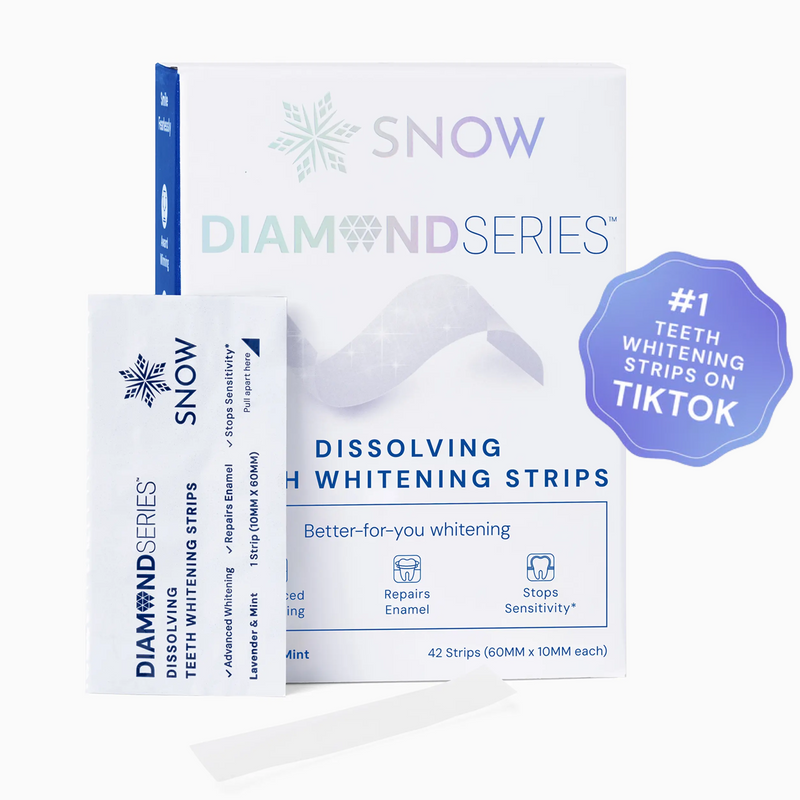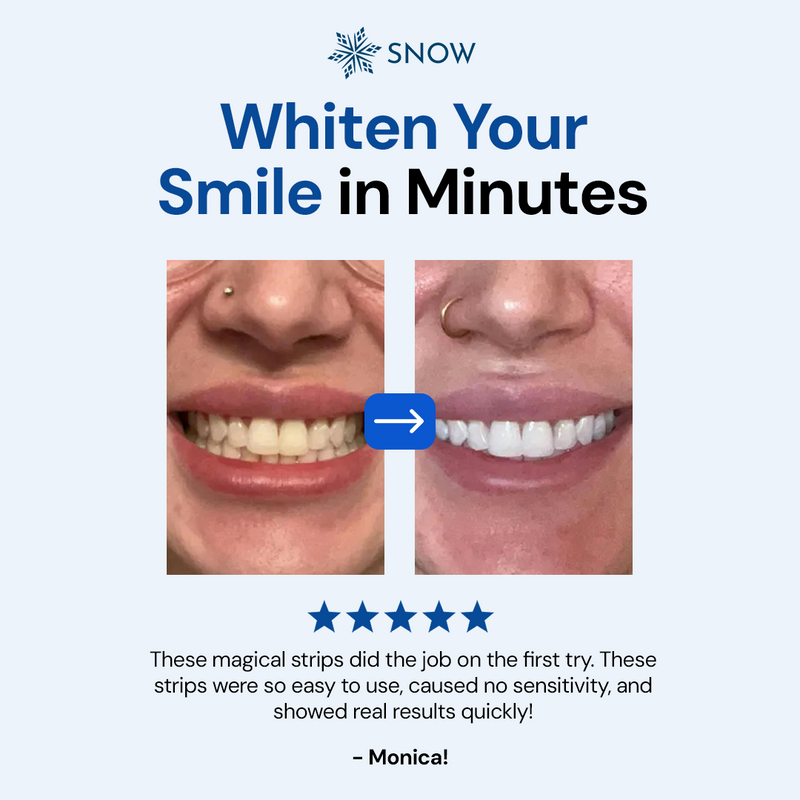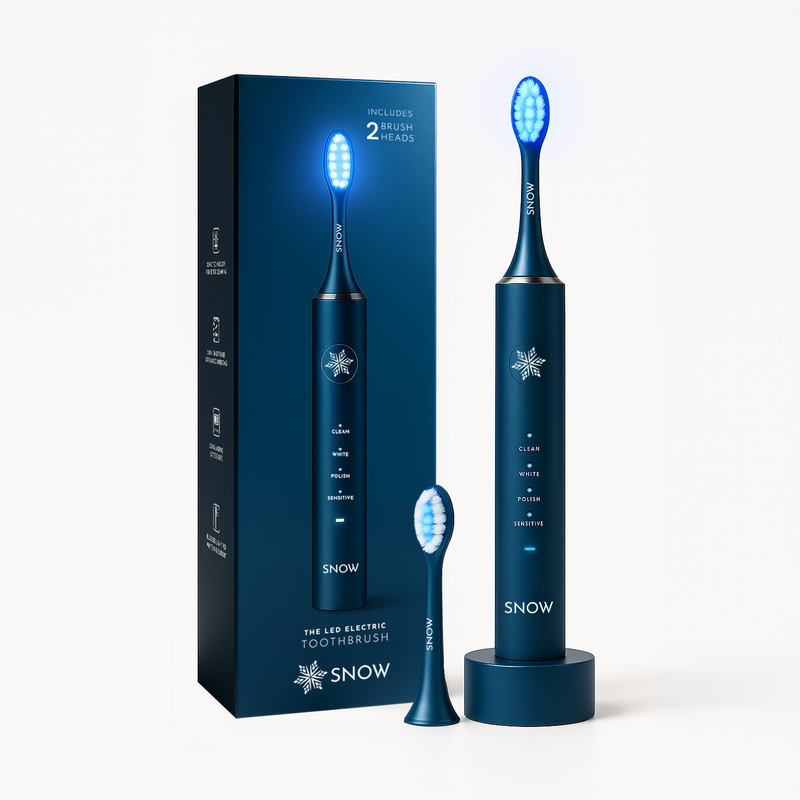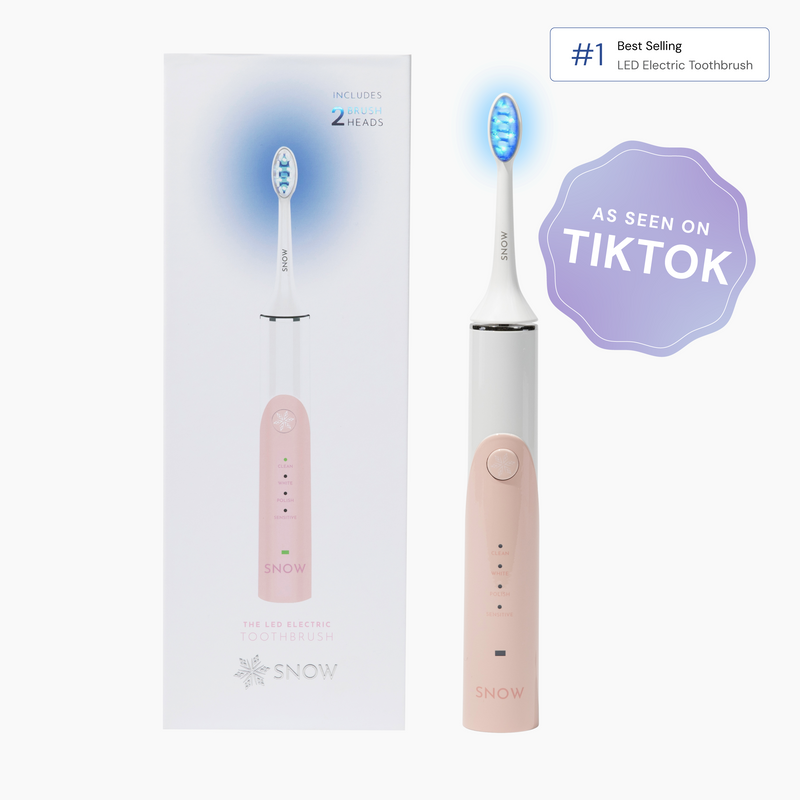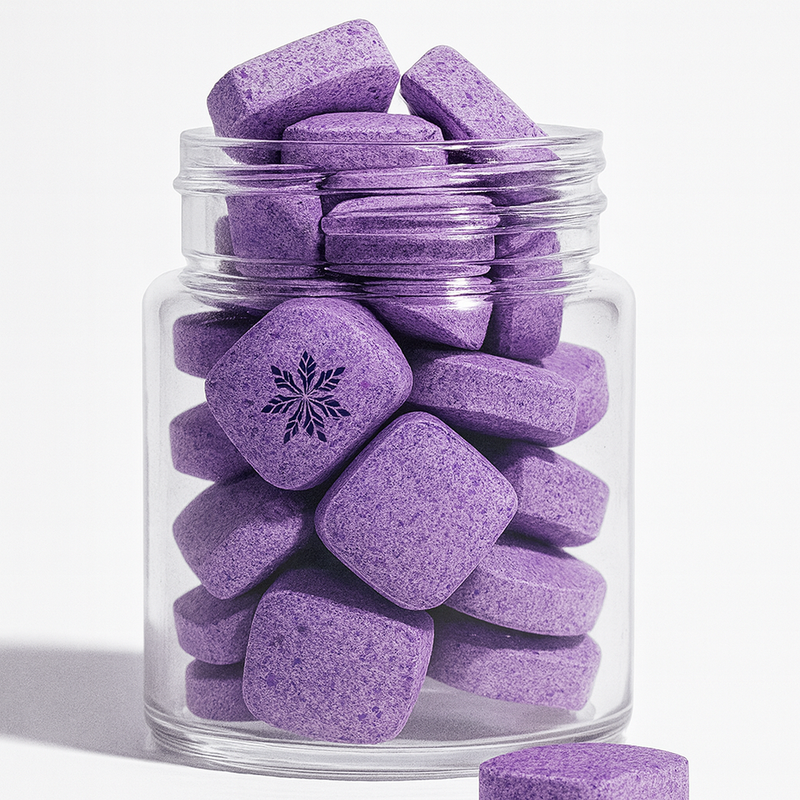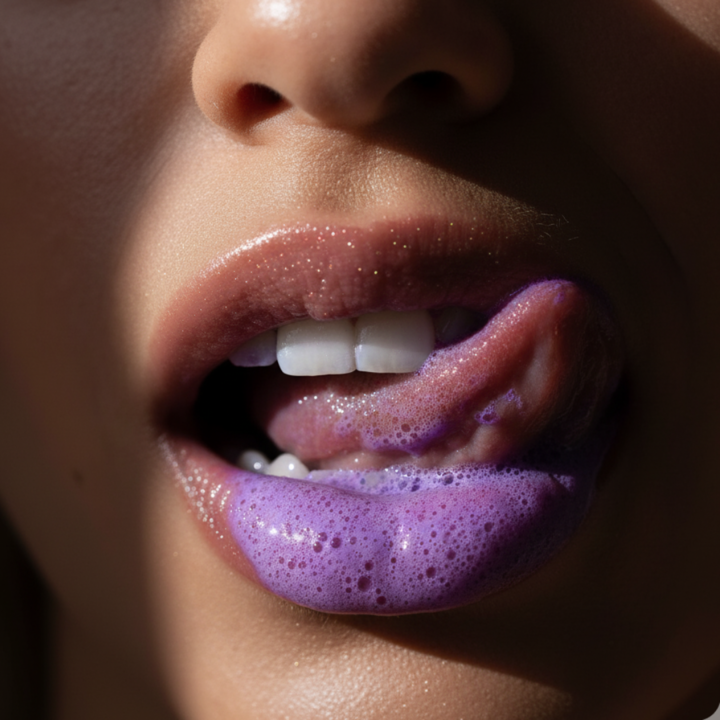Gums hurt after brushing with a new toothbrush? You're not alone. This discomfort can be concerning, but fear not! SNOW Teeth Whitening has the answers you need.
The primary cause of gum pain after using a new toothbrush may be due to hard bristles or tooth sensitivity.
In this article, we'll delve into why your gums hurt after brushing, explore common causes of tooth pain, and provide actionable solutions to alleviate discomfort.
Whether it's adjusting your brushing technique or choosing the right toothbrush, we've got you covered.
Stay tuned to discover expert tips and tricks for maintaining optimal oral health and achieving a brighter, pain-free smile.
What this article covers:- Why Your Gums Hurt When Brushing Your Teeth
- Why Do My Teeth Hurt After Brushing?
- Are You Brushing Too Hard?
- What Do You Do If Your Gums Hurt After Brushing Your Teeth?
- What Do You Do for Tooth Pain After Brushing?
- How Often Should You Replace Your Toothbrush?
Why Your Gums Hurt When Brushing Your Teeth
If your gums hurt after using a new toothbrush, it's likely that you need some time to adjust to the bristles after changing toothbrushes. Some individuals report that an electric toothbrush feels weird at first due to its vibrations, but it's essential to give yourself time to adjust to this effective cleaning method.
However, you should not be in a significant amount of pain when brushing your teeth; new brush or not.

In this section, we'll delve into several potential factors contributing to gum discomfort during brushing.
From common culprits like aggressive brushing techniques and gum disease to lesser-known triggers such as canker sores, periodontal abscesses, hormonal fluctuations, and the presence of braces, we'll cover it all.
By identifying these underlying causes, we aim to empower you with the knowledge needed to address gum pain effectively and achieve a more comfortable and enjoyable oral hygiene experience.
You're Brushing Too Hard
Brushing your teeth vigorously might seem like a good way to remove plaque and debris, but it can actually do more harm than good. Aggressive brushing can damage gum tissue, leading to inflammation and tenderness.
Additionally, noticing your toothbrush turning pink could be a sign of bleeding gums, which may be caused by brushing too hard.
To prevent this, SNOW recommends using a soft-bristled electric toothbrush, like our LED Teeth Whitening Electric Toothbrush, and gentle brushing motions to clean your teeth effectively without causing harm.
Gum Disease
Gum disease, including gingivitis and periodontitis, is a prevalent cause of gum pain during brushing.
These conditions involve inflammation and infection of the gums, which can make them sensitive and prone to bleeding when brushing.
It's essential to address gum disease promptly through proper oral hygiene and professional dental care to prevent further discomfort and complications.
Canker Sore
Canker sores, also known as aphthous ulcers, can develop in the mouth and become irritated during brushing.
While the exact cause of canker sores is unknown, factors such as stress, hormonal changes, and certain foods can trigger their formation.
SNOW recommends using a soft-bristled toothbrush and avoiding abrasive toothpaste to minimize irritation and discomfort.
Periodontal Abscess
A periodontal abscess is a painful condition characterized by a pus-filled sac near the tooth root, often resulting from advanced gum disease or a bacterial infection.
Brushing over an abscess can exacerbate pain and discomfort in the gums.
SNOW advises seeking prompt dental treatment to address the abscess and alleviate associated symptoms.
Hormonal Changes
Fluctuations in hormone levels, such as those occurring during puberty, pregnancy, or menopause, can affect gum health and make them more sensitive to brushing.
Pregnant individuals, in particular, may experience swollen and tender gums due to hormonal changes.
SNOW suggests practicing gentle oral hygiene and using products specifically formulated for sensitive gums to manage discomfort.

Braces
Orthodontic appliances like braces or retainers can cause irritation and soreness in the gums, especially during brushing.
The wires and brackets of braces can trap food particles and plaque, increasing the risk of gum inflammation and pain.
SNOW advises using special orthodontic toothbrushes and techniques recommended by your orthodontist to clean around braces effectively.
Smoking Or Tobacco Chewing
Tobacco use is a significant risk factor for gum disease and can exacerbate inflammation and pain in the gums.
The chemicals in tobacco products impair blood flow to the gums, hindering their ability to heal and fight off infections.
SNOW encourages individuals who smoke or chew tobacco to quit and seek support to improve their oral health and reduce gum pain.
Poor Diet
Nutritional deficiencies, particularly in vitamin C and B vitamins, can weaken gum health and increase susceptibility to gum disease and discomfort.
A diet lacking in essential nutrients can impair the body's ability to repair and maintain healthy gum tissue, leading to pain and inflammation during brushing.
SNOW recommends consuming a balanced diet rich in fruits, vegetables, and lean proteins to support gum health and reduce discomfort.
By addressing these potential causes and implementing proper oral hygiene practices, you can alleviate gum pain during brushing and promote a healthier smile.
Why Do My Teeth Hurt After Brushing?
If you're experiencing tooth pain after brushing, several factors could be at play.
According to the Mayo Clinic, sensitive teeth are a common cause of discomfort, especially when exposed to hot or cold temperatures.
Let's dive into some potential reasons why your teeth might be hurting and how to address them.
Hard Toothbrush Bristles
Your toothbrush plays a crucial role in oral hygiene, but if the bristles are too stiff, they can cause irritation to your gums.
Opt for a toothbrush with soft or extra-soft bristles to prevent damage to your gum tissue.
Tooth Sensitivity
Sensitive teeth can make brushing a painful experience, especially if you brush too vigorously or with a hard-bristled brush. Consider using toothpaste formulated for sensitive teeth and adopting gentle brushing techniques to minimize discomfort.
Tooth Decay
According to MedlinePlus, gum disease or tooth decay can heighten sensitivity, making your gums more prone to pain during brushing.
Maintaining good oral hygiene practices and addressing any underlying dental issues can help alleviate discomfort.
You're Using The Wrong Toothbrush
Using a toothbrush that's not suitable for your teeth and gums can lead to pain and discomfort.
Choose a toothbrush specifically designed for your oral health needs, and consult with your dentist for personalized recommendations.
By addressing these potential causes and making adjustments to your oral care routine, you can minimize tooth pain after brushing and enjoy a healthier, happier smile.

Are You Brushing Too Hard?
If you're experiencing pain after brushing, it might be a sign that you're brushing too hard.
At SNOW, we recommend reassessing your brushing technique to ensure optimal care for your teeth and gums.
Instead of aggressive scrubbing, try using gentle, circular motions when brushing. This technique helps prevent unnecessary stress on your gums and enamel, promoting a healthier mouth overall.
To further enhance your brushing experience and maintain a gentle yet effective approach, consider upgrading to one of our premium electric toothbrushes, such as the SNOW LED Teeth Whitening Electric Toothbrush or the Advanced Whitening Electric Toothbrush.
These innovative devices are designed to provide thorough cleaning while minimizing the risk of over-brushing.
Additionally, don't forget to stock up on replacement brush heads for your electric toothbrush to ensure continued freshness and efficacy in your oral care routine.
Explore our selection of Replacement Heads for Advanced LED Electric Toothbrush to maintain peak performance and achieve a brighter, healthier smile with ease.
What Do You Do If Your Gums Hurt After Brushing Your Teeth?
If you experience gum pain after brushing, SNOW recommends the following strategies to alleviate discomfort:
- Rinse with warm salt water: Gently rinsing your mouth with warm salt water can help soothe gum irritation and reduce inflammation.
This simple remedy can provide immediate relief and promote healing. - Apply ice: Applying ice to the affected area can help numb the pain and reduce swelling. Wrap ice cubes in a cloth and place them on the outside of your cheek where the pain is localized for a few minutes.
This can help alleviate discomfort and provide temporary relief. - Avoid irritants: Be mindful of your diet and avoid consuming acidic or spicy foods that can further irritate sensitive gums.
Opt for gentle, soft foods that are less likely to aggravate the discomfort and promote healing.
By incorporating these simple yet effective strategies into your oral care routine, you can manage gum pain after brushing and promote overall gum health and comfort.
Remember to maintain a consistent brushing and flossing routine and visit your dentist regularly for check-ups and professional cleanings.
What Do You Do For Tooth Pain After Brushing?
If you're experiencing tooth pain after brushing, SNOW recommends the following steps to address the discomfort effectively:
- Switch to a softer brush: Consider using a toothbrush with soft bristles to minimize irritation and reduce the risk of aggravating sensitive teeth.
- Use desensitizing toothpaste: Incorporate desensitizing toothpaste into your oral care routine. These toothpaste formulations are specifically designed to alleviate discomfort associated with tooth sensitivity, providing relief with regular use.
By following these recommendations, you can effectively manage tooth pain after brushing and maintain optimal oral health and comfort.
Additionally, incorporating SNOW's Teeth Whitening Toothpaste into your routine can help brighten your smile while providing gentle care for sensitive teeth.

How Often Should You Replace Your Toothbrush?
At SNOW, we understand the importance of maintaining optimal oral hygiene to achieve a bright, healthy smile. That's why we recommend replacing your toothbrush regularly to prevent discomfort such as gums hurting after brushing with a new toothbrush.
Replace Every Three To Four Months
It's essential to replace your toothbrush every three to four months to ensure effective plaque removal and prevent bacterial buildup.
Over time, toothbrush bristles can become frayed or worn out, reducing their effectiveness in cleaning your teeth properly.
Prevent Pain And Discomfort
Regularly replacing your toothbrush or toothbrush head helps prevent pain associated with a new brush.
When bristles are dull or too soft from wear, they may not clean adequately, leading to potential gum irritation or discomfort after brushing.
By adhering to a consistent toothbrush replacement schedule, you can maintain optimal oral health, minimize discomfort, and enjoy a brighter, healthier smile.
Conclusion
After delving into the nuances of gum discomfort post-brushing with a new toothbrush, it's clear that maintaining oral health extends beyond just brushing technique.
We've emphasized the significance of regular toothbrush replacement every three to four months or sooner if bristles appear worn out. By doing so, individuals can mitigate the risk of gum irritation and discomfort associated with using a new brush.
Our comprehensive guide underscores the importance of effective plaque removal and the prevention of bacterial buildup for overall oral hygiene.
At SNOW, we prioritize your dental wellness, offering top-quality toothbrushes designed to optimize your brushing experience.
Ensure your oral health journey is smooth and pain-free by incorporating our premium toothbrushes into your routine.
Experience the difference with SNOW's innovative dental solutions today! Visit our website for more information on teeth whitening and explore our range of products.
If you want to learn more, why not check out these related posts:
- When to Change Your Toothbrush After Strep
- Why Should You Change Your Toothbrush Every 3 Months
- Best Electric Toothbrush for Small Mouths
- When to Change Toothbrush After Being Sick
- How to Clean Electric Toothbrush
- Does Electric Toothbrush Clean Better?
- Can Your Toothbrush Make You Sick?
- Cleaning Toothbrush with Vinegar
- How Often Should You Change Your Toothbrush?
- When to Change Toothbrush After Strep
- Electric Toothbrush Hurts My Teeth
- Gums Hurt After Brushing with New Toothbrush
- Why Change Toothbrush Every 3 Months?
- Why Is My Toothbrush Turning Pink?

















































